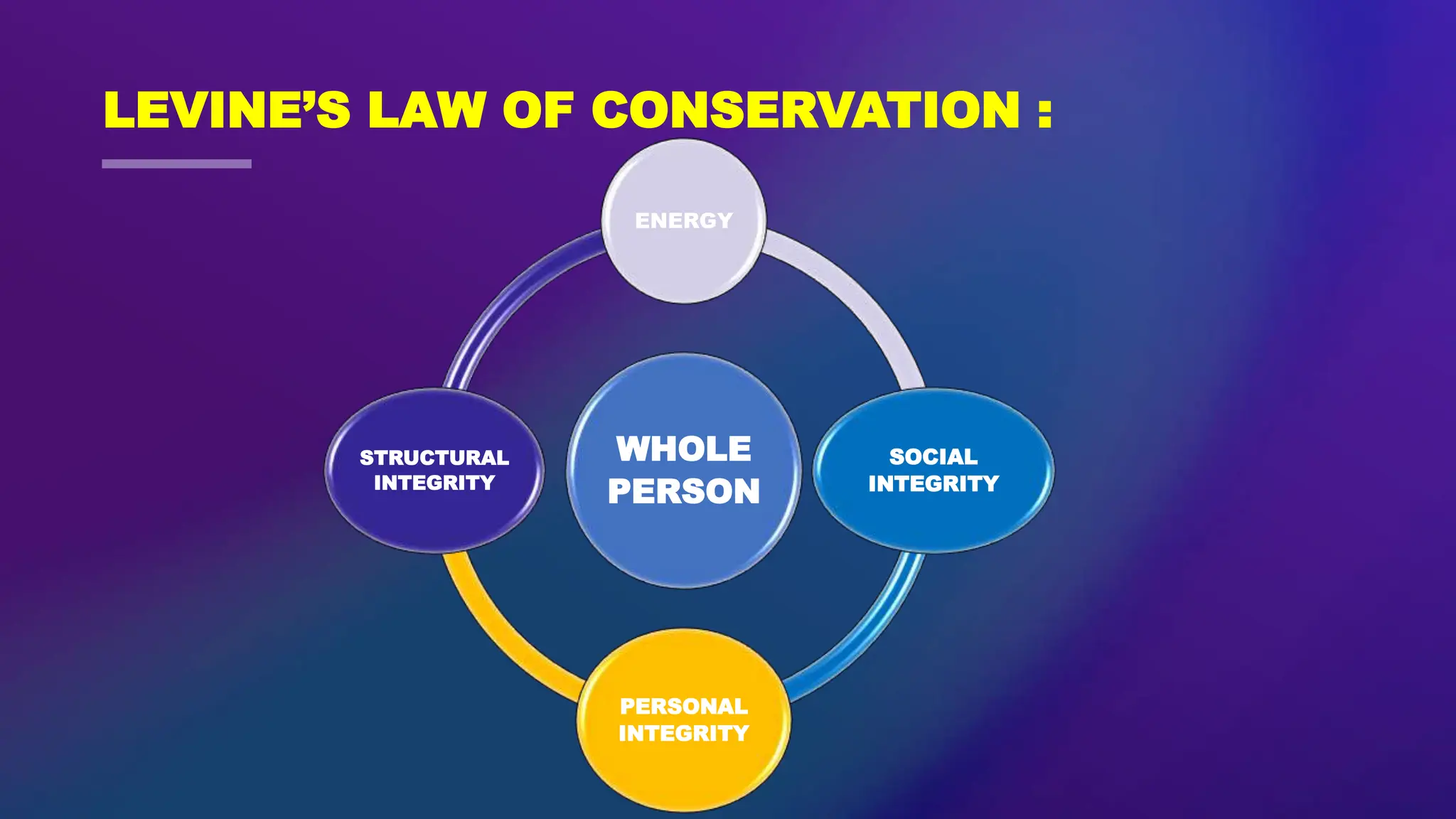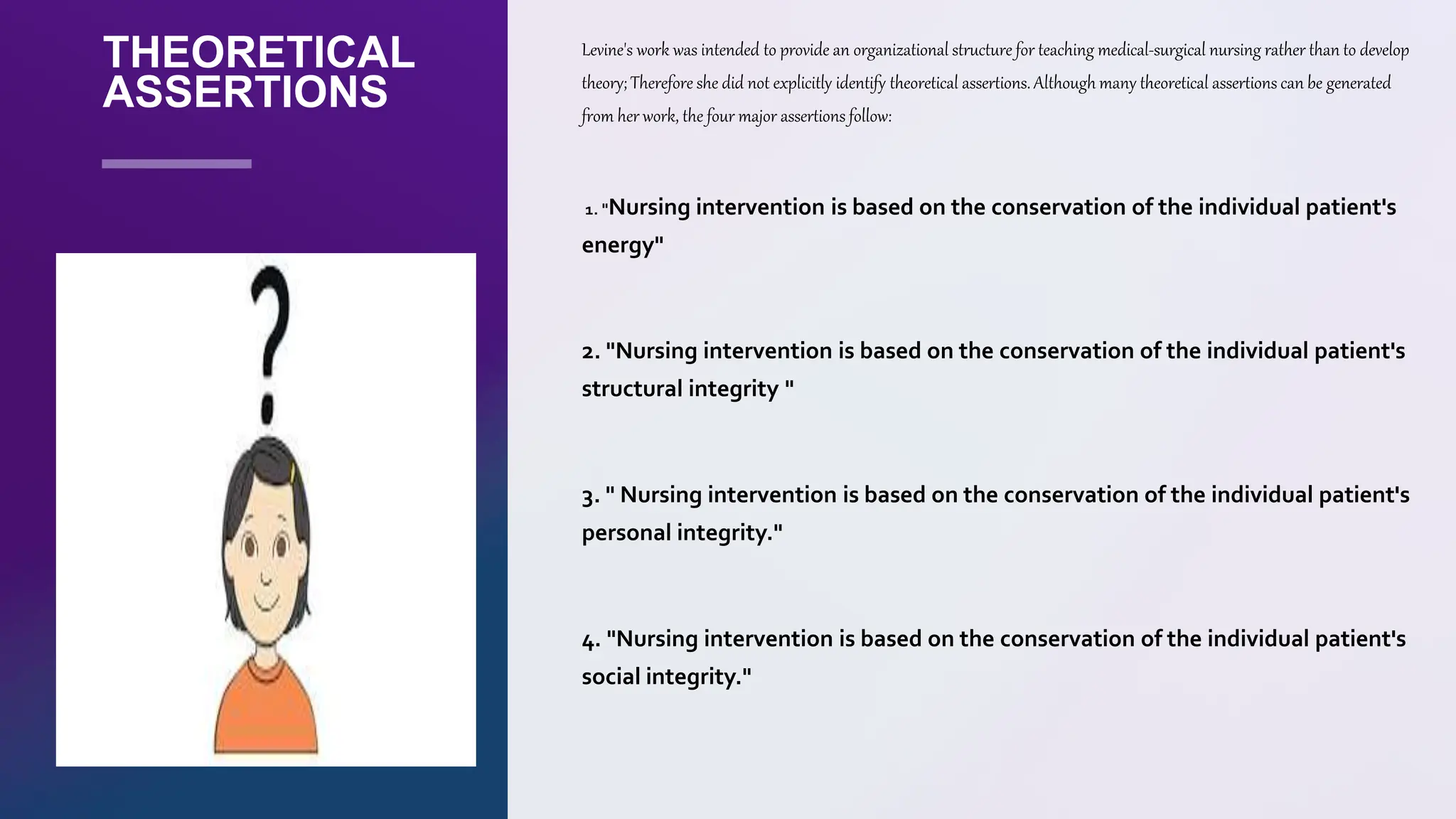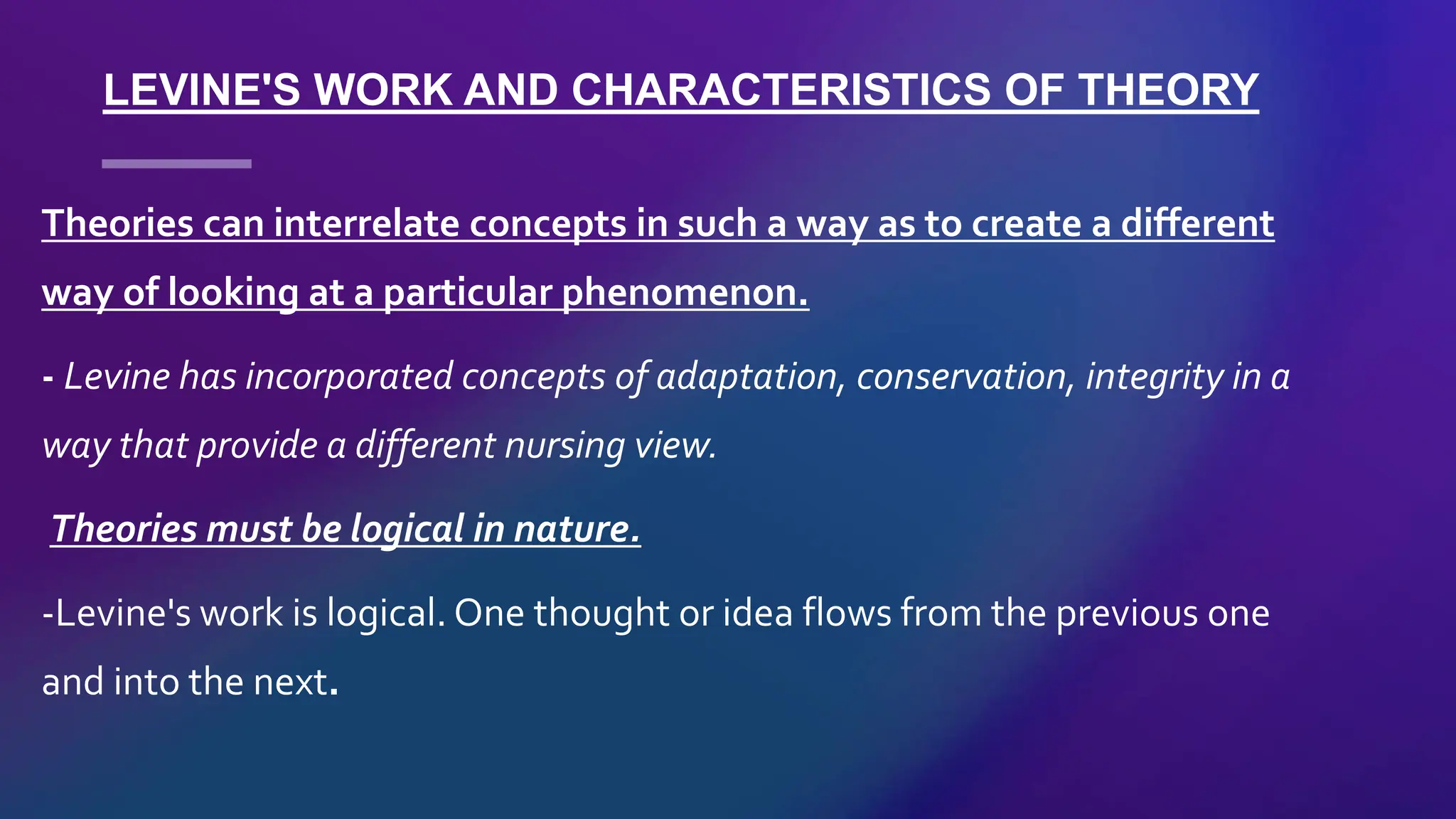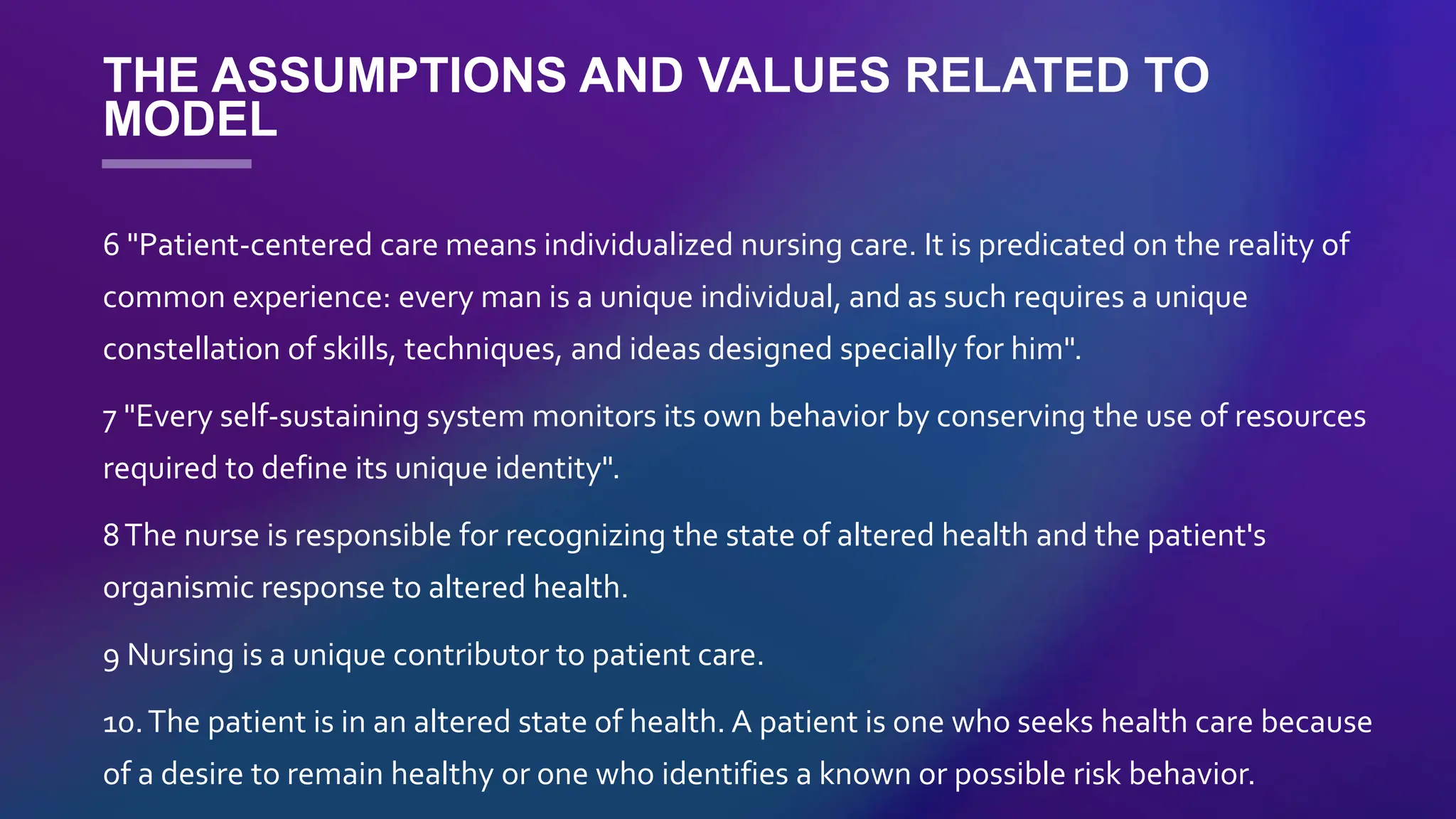1. Myra Estrin Levine was an influential nursing theorist born in 1920 in Chicago. She had a varied nursing career and helped establish nursing as an applied science.
2. Levine developed the Conservation Model of Nursing, which focuses on maintaining wholeness and integrity through the conservation of energy, structural integrity, personal integrity, and social integrity.
3. The goal of nursing according to Levine is to promote adaptation through the conservation principles in order to achieve and maintain the patient's wholeness. Nursing interventions are aimed at testing hypotheses based on the conservation principles.


















































